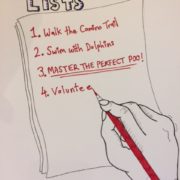Acupuncture, a biomedical perspective
HOW DOES ACUPUNCTURE WORK FROM A BIOMEDICAL PERSPECTIVE?
When the question is posed “how does acupuncture work?, the answer “they don’t really know” is rather unsatisfactory. It is also not entirely true.
Science is on the way to proving the existence of acupuncture points. Recent studies have used Photoluminescent Bioceramic Material at acupuncture point locations and observed changes in electrical conductivity. Similarly, CT scans have revealed the anatomical structures of acupuncture points, finding a higher density of micro-vessels and macro-vascular structures. And, MRI studies have shown that acupuncture stimulates major integration centres of the Central Nervous System.
But let’s stick to explaining Mechanisms of Action. It’s important we understand acupuncture from a Western Medicine Perspective. We are western people, suffering from western conditions. It’s nice and idealistic to paint the wonder of acupuncture as a magical enigma, but it does not serve our credibility as doctors of medicine. It’s like saying “this Buddhism is such a nice philosophy”, but in actual fact it’s more of a science and one of the main religions of the world. One could also say “oh, Chinese Medicine is a relaxing alternative therapy”, but in actual fact it’s a logical comprehensive system of medicine.
Without getting too heavy in jargon, let’s look at the effect on the body from acupuncture needling.
The initial insertion causes a minute local tissue trauma. This activates positive tissue damage and repair mechanisms such as:
- Vasodilation – the widening of blood vessels which enhances permeability and accessibility of immune cells.
- Immune Cells – release inflammatory agents that increase blood flow at the needling site
- Blood Coagulation System – simultaneously produces chemical reactions that initiate restoration phases of tissue repair
- Homeostasis is restored – inflammatory process shuts down and vessels return to normal blood flow
In short, the effects of acupuncture open blood and nutrient flow, initiate immune function, promote tissue healing and restore autonomic balance (homeostasis).
What about the analgesic “pain relief” effect of acupuncture?
Nociceptive neurons (pain receptors) relay messages from needling sites to the spinal cord – central nervous system (CNS). Needle insertion provides controlled means of activating propriospinal reflexes. These are our protective reflexes that would take your hand away from a thorn or hot iron. Because needles are inserted superficially in minute, controlled conditions, the reflexes are not triggered enough to pull your hand away but the response is enough to mediate pain relief processes from the CNS.
Do we ever enquire so much about how antibiotics work when a doctor prescribes them?
Not really, we seem to trust Western Medicine without too much questioning. It will take some time and stronger evidence based research before Eastern Medicine is met with the same credibility. A healthy curiosity and critical mind is necessary for all forms of medicine.




Leave a Reply
Want to join the discussion?Feel free to contribute!